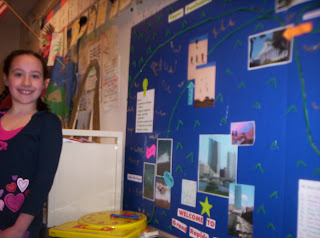


We met Lilly Jefferson today and she told us all about Richmond, city of history and heroes!! Thomas Jefferson, Patrick Henry and Maggie L. Walker! There is an inspirational story around every corner!! What a lot of fun!!
Richmond is the capital of the Commonwealth of Virginia, in the United States. Like all Virginia municipalities incorporated as cities, it is an independent city and not part of any county (Richmond County is unrelated, and located more than 53 miles (85 km) away in the northeast region of the state). Richmond is the center of the Richmond Metropolitan Statistical Area (MSA) and the Greater Richmond area. Surrounded by Henrico and Chesterfield Counties, the city is located at the intersections of Interstate 95 and Interstate 64 in central Virginia. As of 2006, the city's estimated population is 192,913, with a metropolitan area population of 1.2 million, making the Richmond Metropolitan Area the third largest metropolitan area in Virginia after Washington-Baltimore and Hampton Roads.
The site of Richmond, at the fall line of the James River in the Piedmont region of Virginia, was briefly settled by English settlers from Jamestown in 1607, near the site of a significant native settlement. The present city of Richmond was founded in 1737. It became the capital of the Colony and Dominion of Virginia in 1780. During the Revolutionary War period, several notable events occurred in the city, including Patrick Henry's, "Give me liberty or give me death," speech in 1775 at St. John's Church, and the Virginia Statute for Religious Freedom in 1779; the latter of which was written by Thomas Jefferson in the city. During the American Civil War, Richmond served as the capital of the Confederate States of America, and many important civil war landmarks remain in the city today, including the Virginia State Capitol and the White House of the Confederacy, among others.


















































